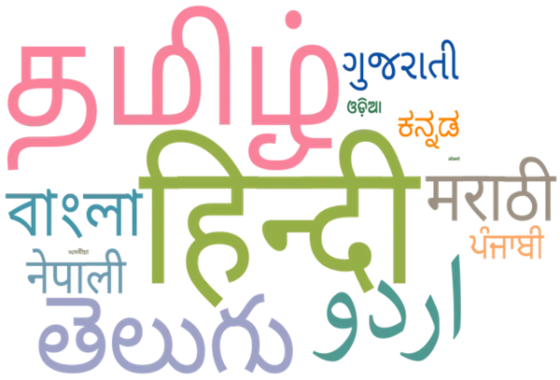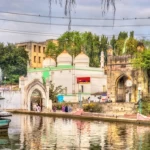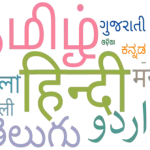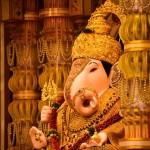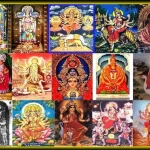Discover India's linguistic treasure trove: 22 official languages & hundreds more, a testament to cultural richness. #LinguisticDiversity #India"
Introduction:
India, often referred to as the land of unity in diversity, boasts an incredible linguistic kaleidoscope. With a myriad of languages spoken across its vast expanse, India is a treasure trove of linguistic diversity. Each language is a testament to the vibrant cultural heritage of the region it represents. In this blog, we embark on a linguistic journey to explore the richness and significance of Indian languages, celebrating the multilingual tapestry that defines the nation.
A Towering Tapestry of Languages:
India's linguistic diversity is unparalleled, with 22 officially recognized languages and several hundred more spoken across different states and regions. Each language has a unique script, vocabulary, and grammar that reflects the history and culture of the people who speak it. From the rhythmic sounds of Bengali to the melodic intonations of Tamil, every language has its distinct charm.
Linguistic States and the Language Policy:
India's linguistic diversity is the cornerstone of its federal structure. Many states are organized on linguistic lines, with state governments promoting and preserving the local language. The "Three Language Formula" ensures the study of three languages in schools: the mother tongue, the regional language, and Hindi or English. This policy fosters multilingualism and encourages cultural exchange.
Language as a Cultural Identity:
Languages in India are not just modes of communication but carriers of culture, history, and identity. They provide a sense of belonging and pride to their speakers. The diverse literary works, folktales, and classical texts written in different languages offer windows into the rich cultural tapestry of the nation.
Endangered Languages and Preservation Efforts:
Amidst the linguistic diversity, some languages are facing the threat of extinction. Several tribal and indigenous languages are endangered due to the influence of dominant languages and changing demographics. Linguists, scholars, and organizations are working tirelessly to document and revitalize these endangered languages, realizing the value they hold as intangible cultural heritage.
Multilingual Cities and Cosmopolitan Spaces:
India's urban centers are vibrant melting pots of cultures and languages. Cities like Mumbai, Delhi, and Bengaluru exemplify India's cosmopolitan ethos, where people from diverse linguistic backgrounds coexist and communicate effortlessly in multiple languages. This linguistic harmony not only fosters unity but also strengthens the cultural fabric of these metropolises.
India's Lingua Franca: English and Hindi:
English and Hindi play significant roles in India's linguistic landscape. English is widely used in education, governance, business, and international communication. Hindi, as the official language of the Indian government, acts as a lingua franca for interregional communication and has a strong presence in Bollywood and popular culture.
The Importance of Multilingualism:
Being multilingual is a cultural asset in India. People who speak multiple languages can connect with different communities, breaking down barriers and promoting cultural exchange. Multilingualism also enriches cognitive abilities and is linked to greater empathy and understanding.
India's linguistic diversity is a source of pride and admiration. It serves as a reminder of the country's pluralistic ethos and cultural heritage. Preserving and promoting Indian languages is essential to safeguarding the unique identities they represent. By embracing multilingualism, India fosters a deeper sense of unity while celebrating the beautiful tapestry of languages that adorns the nation's heart. As we continue our linguistic journey, let us revel in the magic of India's linguistic kaleidoscope and cherish the treasure trove of languages that makes the nation truly extraordinary.
India is a linguistically diverse country with a vast number of languages spoken across its different regions. According to the Eighth Schedule of the Indian Constitution, there are 22 officially recognized languages. Additionally, there are several hundred other languages and dialects spoken by various communities. Here is a list of the officially recognized languages in India:
Assamese
Bengali
Bodo
Dogri
Gujarati
Hindi
Kannada
Kashmiri
Konkani
Maithili
Malayalam
Manipuri (also known as Meitei or Meithei)
Marathi
Nepali
Odia (Oriya)
Punjabi
Sanskrit
Santali
Sindhi
Tamil
Telugu
Urdu
In addition to these officially recognized languages, India is home to a multitude of other languages and dialects, some of which are spoken by small tribal and indigenous communities. Some notable examples include:
Rajasthani
Sindhi
Tulu
Khasi
Garhwali
Mizo (Lushai)
Konkani
Kokborok (Tripuri)
Bhili/Bhilodi
Gondi
Manipuri (Bishnupriya Manipuri)
It's worth noting that English is also extensively used for official purposes and as a subsidiary official language, especially for communication between the central government and the states, and for international communication.
This linguistic diversity is a testament to India's rich cultural heritage and the coexistence of numerous distinct linguistic traditions across the country.


